#Wellesley underground
Text
Alex Joseph ’10 (@AlexJosephATL): Why Atlanta Should #StopCopCity
Written by Alex Joseph ‘10
I never imagined my first foray into local politics would start like it did: I got into a fight on Twitter with a local elected official. My city council member had just tweeted a strongly-worded statement denouncing a controversial $90 million police and fire department training center being planned in Atlanta, Georgia known as “Cop City.” In that same statement, however, they also said that despite their opposition to the project, the city council did not have the power to cancel the city’s lease agreement and to stop the construction of Cop City. As a lawyer who represents cities and counties and a person who has rented several apartments (and broken several leases), I just didn’t believe their statement that nothing could be done.
I then spent the weekend digging into the publicly available lease and what I found surprised me. In short, the lease has a provision (Sec. 4.3) that allows the mayor to terminate the lease at any time with or without cause with the requirement of giving the lessee (in this case, the Atlanta Police Foundation) 180 days written notice. And after further research, I uncovered that the city council can also adopt a resolution at any time to cancel the lease! To summarize these findings, I wrote this legal memorandum and shared it with the public, via Twitter of course. My hope is that members of the public will use the information and legal arguments contained in my memorandum to have constructive, fact-based conversations with our elected officials and ultimately persuade them to cancel the lease between the city and the Atlanta Police Foundation.
The lease should be canceled for many reasons. First, the proposed site location is within the Weelaunee Forest, which is Atlanta’s largest remaining green space and one of the city’s greatest defenses against worsening climate change. The forest was originally inhabited by the Muscogee (Creek) Tribe before their forced removal in the early 19th century. The area then became part of a complex of farms that included a slave plantation and was purchased by the City of Atlanta in 1911. The city would operate the land as a prison farm until the mid-1990s.
The $90 million conceptualized Cop City facility will include a mock city, a “burn building” for firefighters to practice, a firing range, a driving course, stables and pastureland for police horses and kennels for K-9 units, along with training classrooms. The design designates 85 acres of the proposed site location to be turned into the training facility while the other 265 are slated to be preserved as greenspace. The scale of the project is truly unprecedented. For comparison, the NYPD’s training academy is a roughly 32-acre campus and the LAPD training campus is about 20 acres. The proposed site location is also in an area largely made up of Black residents — one of the groups most at risk of over-policing.

But perhaps the most important reason the lease should be canceled is because Atlantans are, for the most part, vehemently against the construction of Cop City. When the proposal first emerged on the city council meeting docket for consideration, there were 1,166 comments from the public, totalling 17 hours, the majority of which were in opposition to the project. This has been the driving force behind my research and involvement because no matter where one stands on the issues surrounding Cop City, I think we all agree our elected officials should listen to the voices of their constituents. Today, protests continue against the project and while construction is slated to begin in August, there is energy in the community around holding councilmembers accountable for acknowledging the feasibility of canceling the lease. I’m glad that in a small way, my legal research has helped amplify these voices loud enough for decision makers to listen.
_________
Alex Joseph graduated from Wellesley with a degree in history and later obtained a JD from the University of Georgia School of Law. Her previous experience includes serving as an Assistant District Attorney in South Carolina and as an Assistant United States Attorney in the Northern District of Georgia.
16 notes
·
View notes
Text



Susan Bottomly (aka International Velvet) elected as Village Other’s SLUM GODDESS for their August 1966 issue. The piece was accompanied with the following text: “Her sign in the Zodiac is Libra, and for August friends will prove a catalyst, for they are eager to do things for her and with her. On her seventeenth Birthday last October her secret wish was to appear in an underground movie. Ten months later her wish was fulfilled
Her name is International Velvet and her first feature-length film appearance was Gerard Malanga’s Prelude to International Velvet Debutant, and since then she has appeared briefly in three Andy Warhol films. Leopold Sacher-Masoch’s ‘Venus in Furs’ has been especially adapted as a Warhol vehicle for her.
She appeared as cover girl on the December ‘Mademoiselle’ and comes from Wellesley, Mass., the daughter of a prominent district attorney.”
#susan bottomly#article#slum goddess#village other#August 1966#1966#summer 1966#susan bottomly 1960s#1960s#black and white#august#susan bottomly black and white
2 notes
·
View notes
Text
some important things to do today (and always):
educate yourself! understand why c*lumbus day should no longer and never have been celebrated, and how one day dedicated to a group of people is not enough to undo, dismantle, or amend systemic colonialism
Acts of Solidarity on Indigenous Peoples Day and Beyond (source: Cultural Survival)
acknowledge the stolen land you exist on, there are many easily accessible tools to help you, here are just a few
Whose Land (source: Whose Land)
Native Land (source: Native Land Digital)
start expanding your library to include books written by native authors, here are a few lists for places to help you get started
25 YA Books for Indigenous Peoples Day (source: YA WORLD CHALLENGE)
15 Remarkable Books by Indigenous Authors (source: The Uncorked Librarian)
shop at and support small native-owned businesses
9 Native-Owned Brands & Artisans To Support This Indigenous Peoples' Day (source: The Good Trade)
10 Native-Owned Brands That You Should Know About (source: The Denizen Co.)
donate to indigenous charities and organizations that provide resources to native communities, sign petitions, get involved
Supporting Native Organizations on Indigenous Peoples’ Day (source: Wellesley Underground)
Indigenous (source: jjessmineindigenous)
this is not an exhaustive list, there are many more things you can do to aid native communities and people, do some research! thanks for reading!
7 notes
·
View notes
Text
Five Condos
5 St Joseph St.,
Toronto, ON M4Y 1J6
Bay & Wellesley Streets
Bay Street Condos
TTC Wellesley Entrance
9 Foot smooth Ceilings
Split Bedrooms Floor Plans
Truly Functional Dens
Breath-taking Décor
Magnificent Kitchens
Tons of Sun Light
Massive Balconies
Fitness& Weights
Meeting & Party Room
Outdoor Deck with BBQ’s
24 hrs Concierge & Security
Visitor & Underground Parking
Bachelor :…

View On WordPress
0 notes
Text

💯 Yonge at Wellesley Station Condos 💯 This is a new luxurious condominium project situated at a premier location in the heart of downtown Toronto. Yonge At Wellesley Station Condos is a new high-rise mixed-use development by Plaza in Toronto.
📋 Project Detail 📋
📋️ Developer: Plaza Corp Urban Residential Communities
📋️ (Church St & Wellesley St E)
📋 Number of Storeys: 42
📋 Total Number of Suites: 502
📋 VIP Launch: Now
📋 Architects: Quadrangle Architects
✨Highlights✨
✨ Located in the heart of Downtown Toronto
✨ Prominent location on Yonge Street
✨ Close to Toronto’s Financial District
✨ Queen Station and King Station
✨ 1-minute walk to Wellesley Subway Station
✨ On the Yonge-University subway line
✨ Near Perfect Walk Score of 99 out of 100
✨ Close to Eaton Centre
✨ PATH underground network, with 30 kilometers of walkways
💢 Contact us to reserve your unit today!
📞 (647) 370-1040
🏙 300 Richmond St. W. Unit 300, Toronto, ON M5V-1X2
💻 www.locatecondo.com
💻 www.homeleaderrelty.com
✉️[email protected]
#Yonge_at_Wellesley_Station_Condos#Plaza_Corp#YongeAtWellesley#Maitland_Street#Yonge_University_subway_line#Plaza#YongeAtWellesley_floorplan#YongeAtWellesley_pricelist#YongeAtWellesley_firstaccess#YongeAtWellesley_viplaunch#pre_construction_condominium#Yonge_At_Wellesley#condostorontovip#preconstruction#gtacondos#gtarealestate#torontorealestate#investinrealestate#realestateinvestor#investment#HomeLeaderRealty#HLRI#Locatecondo#locatecondo.com#homeleaderrealty.com
0 notes
Text
Wellesley Writes It: Patrice Caldwell
Wellesley Writes It: Patrice Caldwell
In my first Wellesley Writes It interview of 2020, I emailed with Patrice Caldwell ’15 — literary agent, writer, founder of People of Color in Publishing, and editor of the anthology A Phoenix First Must Burn. Here’s the beginning of the interview:

Patrice Caldwell ’15 is the founder & fundraising chair of People of Color in Publishing – a grassroots organization dedicated to supporting,…
View On WordPress
#A Phoenix First Must Burn#agent#E.B. Bartels#EB Bartels#interview#lit agent#literary agent#Patrice Caldwell#people of color#People of Color in Publishing#PoC#Wellesley#Wellesley &039;10#Wellesley &039;15#Wellesley College#Wellesley Underground#Wellesley Writes It#woman#woman of color#woman writer#women#women of color#women writers#WU#YA#young adult#young adult literature
0 notes
Text
Ben hardy ❤
Credit:- @wokeup.injapan
He is really sexy 💞💓❤💜
@smolbeanholland
#ben hardy#ben hardy smut#ben hardy fluff#ben hardy fic#ben hardy fanfic#ben hardy x you#ben hardy edit#ben hardy x female reader#ben hardy x reader#ben hardy x y/n#ben hardy x oc#6 underground#number four#billy x reader#ben hardy angst#bohemian rhapsody#archangel#roger taylor#arthur wellesley
87 notes
·
View notes
Photo
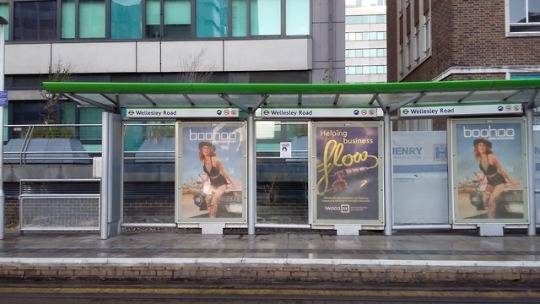
Wellesley Road was the next stop.
1 note
·
View note
Photo

#graffiti art#tunnels#wellesley college tunnels#underground party#college#college party#lesbians#zeta alpha#communism#disposable camera#disposable#party#drinking#beer#chill vibes#chill photography#chill aesthetic
3 notes
·
View notes
Text

Women’s rights activists like Elizabeth Cady Stanton and Betsy Ross, who championed gender equity, didn’t feel the same about race. While many white suffragists worked to help eradicate the institution of slavery, they did not work to ensure that former slaves would have citizenship or voting rights.
“Black women were not accounted for in white women’s push for suffrage. Their fight wasn’t about women writ large. It was about white women obtaining power – the same power as their husbands, black women and black men be damned,” says Howard University Assistant Professor Jennifer D. Williams.
Stanton and Ross and other high-profile leaders in the movement didn’t support the 14th and 15th amendments, which granted former slaves citizenship rights and gave black men voting rights. Given this chasm, a black women’s suffrage movement developed alongside the mainstream movement.
“There was a concerted effort by white women suffragists to create boundaries towards black women working in the movement,” says historian and author Michelle Duster. “White women were more concerned with having the same power as their husbands, while black women saw the vote as a means to improving their conditions.”
Some black suffragists you should know
Sojourner Truth (About 1797-1883)
Born into slavery as Isabella Baumfree, she gained her freedom in the 1820s and supported herself through menial jobs and selling a book written by Olive Gilbert, “Narrative of Sojourner Truth: a Northern Slave, Emancipated from Bodily Servitude by the State of New York in 1828. At the 1851 Women’s Rights Convention held in Akron, Ohio, Sojourner Truth delivered what is now recognized as one of the most famous abolitionist and women’s rights speeches in American history, “Ain’t I a Woman?” In 1872, Truth was turned away when trying to vote in the U.S. presidential election in Battle Creek, Michigan.
Harriet Tubman (About 1820-1913)
Tubman, whose birth name was Araminta Ross, is commonly known as an emancipator who led hundreds of slaves to freedom along the underground railroad. She also was a staunch supporter of women’s suffrage, giving speeches about her experiences as a woman slave at various anti-slavery conventions, out of which the voting rights movement emerged.
Coralie Franklin Cook (1861-1942)
Cook founded the National Association of Colored Women and was known as a committed suffragist. In 1915, she published “Votes for Mothers” in the NAACP magazine The Crisis discussing the challenges of being a mother and why women need the vote.
Angelina Welde Grimke (1880-1958)
A well-known feminist in the District of Columbia, Grimke was a journalist, playwright, poet, lesbian, suffragist and teacher. Grimke wrote for several journals such as Margaret Sanger’s Birth Control Review. Educated at Wellesley College, Grimke’s literary works exposed her ideas about the pain and violence in black women’s lives, and her rejection of the double standards imposed on women.
Charlotta (Lottie) Rollin (1849-unknown)
After the Civil War, the woman suffrage movement split into two separate organizations: the National Woman Suffrage Association (NWSA) —a more radical group and the more mainstream American Woman Suffrage Association (AWSA). Rollin joined the AWSA. During Reconstruction, Rollin became active in South Carolina politics working for congressman Robert Brown Elliott. Rollin spoke on the floor of the South Carolina House of Representatives in 1869 in support of universal suffrage. By 1870, Rollin chaired the founding meeting of the South Carolina Woman’s Rights Association and was elected secretary. Several of Rollin’s family members — sisters Frances, Kate and Louisa also were active in promoting women’s suffrage at both the state and national levels.
Mary Ann Shad Cary (1823-1893)
Cary was perhaps the first black suffragist to form a suffrage association. During the 1850s, she was a leader and spokesperson among the African American refugees who fled to Canada after passage of the Fugitive Slave Act in 1850. In 1853, she founded the Provincial Freeman, a newspaper dedicated to the interests of Blacks in Canada. Cary spoke at the 1878 convention of the NWSA applying the principles of the 14th and 15th Amendments to women and men. She called for an amendment to strike the word “male” from the Constitution. In 1871, Cary unsuccessfully tried to vote in Washington, but she and 63 other women prevailed upon officials to sign affidavits attesting that women had tried to vote. In 1880, she organized the Colored Women’s Progressive Franchise Association, which promoted suffrage and educated people on finance and politics.
Gertrude Bustill Mossell (1855–1948)
A journalist, Mossell, wrote a women’s column in T. Thomas Fortune’s newspaper, The New York Freeman. Her first article, “Woman Suffrage” published in 1885, encouraged women to read suffrage history and articles on women’s rights.
Ida B. Wells (1862-1931)
Wells, who worked with white suffragists in Illinois, founded the Alpha Suffrage Club, the first suffrage group for black women. They canvassed neighborhoods and educated people on causes and candidates helping to elect Chicago’s first black alderman. In 1913, Wells and some white activists from the Illinois delegation traveled to Washington to participate in the historic suffrage parade where women gathered to call for a constitutional amendment guaranteeing women the right to vote. Black suffragists were initially rejected from the event. Wells and other suffragists including white suffragists like Stanton wrote letters asking the parade to allow black women to participate. Event leaders acquiesced, requiring black suffragists to march in the back of the parade to assuage the feelings of white women in the movement who did not want them there. Despite the conditions, black suffragists participated. However, Wells refused to march at the back.
Mary Church Terrell (1863-1954)
In 1896, Terrell and fellow activists founded the National Association of Colored Women and Terrell served as the association’s first president. After the passage of the 19th Amendment, Terrell turned her attention to civil rights.
Anna Julia Cooper (1858-1964)
Anna Julia Cooper was a prominent African American scholar and a strong supporter of suffrage through her teaching, writings and speeches. Cooper worked to convince black women that they required the ballot to counter the belief that ‘black men’s’ experiences and needs were the same as theirs.
Rosa Parks (1913-2005)
Known as the “Mother of the Civil Rights Movement,” because of her role in the Montgomery Bus Boycott, Parks continued to work for civil rights which included voting rights. Parks served as an aide to Congressman John Conyers and used her platform to discuss many issues, including voting rights.
Charlotte Vandine Forten (1785 –1884)
An abolitionist and suffragist, Forten came to Washington in the late 1870’s with her husband, James Forten, a wealthy sail maker and abolitionist. She was a founder and member of the interracial Philadelphia Female Anti-Slavery Society, many of whose members became active in the women’s rights movement.
Harriet Forten Purvis (1810 – 1875)
Daughter of wealthy sailmaker and abolitionist reformer James Forten and Charlotte Forten, Forten Purvis and her sisters were founding members of the Philadelphia Female Anti-Slavery Society, and members of the American Equal Rights Association, where Harriet served as a member of the executive committee. Affluent and educated, the sisters helped lay the groundwork for the first National Woman’s Rights Convention in October 1854 and helped organize the Philadelphia Suffrage Association in 1866.
Margaretta Forten (1806 -1875)
Forten was an educator and abolitionist. She and her mother, Charlotte Forten and her sister, Harriet, were founders and members of the interracial Philadelphia Female Anti-Slavery Society.
Harriet “Hattie” Purvis (1810-1875)
A niece of the Forten family of reformers, Purvis was active in the Pennsylvania Woman Suffrage Association and a member of their executive committee. Between 1883 and 1900, she served as a delegate to the National Woman Suffrage Association. She also served as Superintendent of Work among Colored People for the Woman’s Christian Temperance Union, championing reforms.
Sarah Remond (1826-1887)
Remond was an antislavery lecturer and physician. The Remonds were a noted abolitionist family, well known in antislavery circles and, as a child, Sarah had attended abolitionist meetings. She was an activist in the Salem and Massachusetts Antislavery Societies, and a member of the American Equal Rights Association, where she served as a guest lecturer, and toured the Northeast campaigning for universal suffrage. Discouraged by the split in the women’s suffrage movement after the Civil War, she left the United States, becoming an expatriate in Florence, Italy, in 1866, where she studied medicine.
Frances Ellen Watkins Harper (1825-1911)
Frances Ellen Watkins Harper was an early abolitionist and women’s suffrage leader. She was one of the few African American women present at conferences and meetings about these issues between 1854 and 1890. She also wrote protest poetry that referenced which included musings about voting rights.
Josephine St. Pierre Ruffin (1842 –1924)
Ruffin was a Massachusetts journalist and noted abolitionist before the Civil War. She joined the Massachusetts Woman Suffrage Association in 1875 and was affiliated with the American Woman Suffrage Association. She was a black woman’s club leader in Massachusetts and the wife of George L. Ruffin, one of the woman’s suffrage representatives from Boston in the state legislature. She challenged the opposition to woman’s suffrage in Boston, writing an editorial co-authored with her daughter, Florida Ridley.
Nannie Helen Burroughs (1879-1961)
Burroughs, an educator, church leader and suffrage supporter, devoted her life to empowering black women. She helped establish the National Association of Colored Women in 1896 and founded the National Training School for Women and Girls in 1909.
Ella Baker (1903-1986)
Civil rights activist and freedom fighter, Ella Baker played a key role in some of the most influential organizations of the time, including the NAACP, the Southern Christian Leadership Conference, and the Student Nonviolent Coordinating Committee. In 1964, SNCC helped create Freedom Summer, an effort to both focus national attention on Mississippi’s racism and to register black voters. Baker and many of her contemporaries believed that voting was one key to freedom.
11 notes
·
View notes
Photo


Read the New Interview by Poet Scarlett Sabet and Led Zeppelin Founder Jimmy Page in Interview Magazine below or click on headline link.
JIMMY PAGE AND SCARLETT SABET ARE THE MUSIC-POETRY POWER COUPLE THE WORLD DIDN’T KNOW IT NEEDED
By Stephanie LaCava
Published October 10, 2019
Scarlett Sabet’s poetry is felt three-fold when she performs it. The written words aren’t the same when she says them; they are trance-like, told as if from memory. To call the London-based talent a poet and performer seems inadequate. She’s more so a musician, or, perhaps, a mystic. Her haunting readings have taken place at storied book shops such as San Francisco’s City Lights and Shakespeare & Co. in Paris, and she’s been invited to read at the likes of Wellesley College. She has published four collections of poetry on her own imprint: Rocking Undergound, The Lock and The Key, Zoreh, and Camille earlier this year.
Today, she debuts her spoken word album Catalyst, produced by her partner, the legendary musician Jimmy Page.
Interview sat down with the couple to talk about coming together for this project, the brilliance of the Velvet Underground, and paying to produce your own work.
STEPHANIE LACAVA: You two met in 2012, but it was two years later that your relationship started and you first talked about collaborating together. It would be five more years before today’s release of your project on all streaming platforms. Why this album now?
JIMMY PAGE: One project that I knew it shouldn’t be was poetry with music. So with the production of Scarlett’s work, I wanted to create an individual character for each poem, a sonic landscape to compliment it.
LACAVA: And with all due respect, that was also a cool move. It would have been kind of eye-rolling to do music accompaniment.
SCARLETT SABET: Yes. It feels exciting, but also like a natural progression, I think, because we live and work together every day. Literally every one of these poems, Jimmy was there when I wrote it, and he was the first person that heard it and he’s seen me perform so many times.
PAGE: It was six years ago that I first heard Scarlett read.
SABET: At World’s End Bookshop on the King’s Road in Chelsea.
PAGE: I thought, “This is really interesting. She’s really interesting. She’s definitely got something there.” And the people in attendance soaked up Scarlett’s reading.
LACAVA: Surely, you’ve read a lot of crowds.
PAGE: That’s a good point. The whole place hushed. Rocking Underground was the first poem I heard of Scarlett’s and when we started production, we began with it.
LACAVA: I think people assume the title of the poem is a music reference, but it’s actually quite literal…
SABET: I was on a train. My computer had broken. It was just one of those, ugh, kind of despairing Sunday nights. I just remember there was a guy with a backpack in my face, and I got out my notebook, and there was the rhythm of train.
LACAVA: Do you usually listen to music while you write?
SABET: It’s got to be something that’s trance-like. I can understand why you’d listen to jazz, for example.
LACAVA: That’s a place where both of your practices kind of overlap.
PAGE: Well, yeah. I did this interview with William Burroughs for Crawdaddy Magazine in 1975. We started to talk about trance music. I thought maybe he’d been to see Led Zeppelin on just one occasion. Actually, it was many times at Madison Square Garden. Anyway, we then started talking about this whole trance ethos, about the Master Musicians of Jajouka, this whole genre of tribal trance music from Morocco.
LACAVA: You learned about Jajouka from Brian Jones?
PAGE: Yes. To be fair, I know that Brion Gysin had introduced Brian Jones.
SABET: He was a painter and musician, Burroughs’s lover, and he came up with the cut-up technique with Burroughs.
LACAVA: Ah. What was your connection to Jones?
PAGE: I’d heard Elmore James songs (which Jones played a lot,) but I couldn’t quite work out how to play the music. People would say it was literally, from the neck of a bottle. I thought, ‘So, let’s see how this guy Jones does it.’ Sure enough, he gets up on stage and starts doing some Elmore James songs, and he has the equivalent of what everyone would know as a slide on his finger. I started talking to him when he came offstage, and I said, “Well you know, you’ve really got that down. What are you actually using?” You must understand that nobody that I knew played slide guitar at all. This is the first time I’d seen somebody do it—before Jeff [Beck] was doing it, before the Rolling Stones. So, he said, “Oh, have you got a car mechanic near you?” And I said, “I literally do have one not too far away.”‘ He said, “Go there and ask for a bush. It’s called a bush.” A thing used used in car maintenance. And he said, “You’ll find that it’ll just fit on your finger absolutely perfectly, and that’s what I use.” This guy was so generous.
LACAVA: Is there any young musician today who has really impressed you?
PAGE: Well, I was so impressed with the two guys that I saw with you.
LACAVA: Stefan Tcherepnin and Taketo Shimada, the New York-based Afuma.
SABET: They were so good. You said that was reminiscent of New York in the ’60s?
PAGE: Well, well, yeah. It was. It definitely had that sort of trance vibe.
LACAVA: Back to Scarlett’s start. You did your first reading at Shakespeare & Co. in Paris in January of 2015. Jimmy help set it up?
PAGE: So, when Sylvia (Whitman, owner and daughter of George Whitman) was giving me a tour after my own book signing, I saw the poetry section there, and I said, “Do you having readings here?” And she said, “Yes.” And I said, “Well, French as well as English?” “Oh, no. Only English.” And I thought, “I know a poet.”
LACAVA: It was Sylvia who introduced me to Scarlett years ago.
PAGE: After hosting Scarlett, Sylvia said to me, “It’s really powerful in print, but her renditions, they’re in another realm.”
LACAVA: So, Sylvia’s now the fourth person in this interview.
PAGE: That’s right. And something else funny happened when I was back at Shakespeare and Company. The man in charge of the rare book department said, “Oh, Sir, that Françoise Hardy track that you were on was absolutely amazing. That’s one of my favorite pieces of your guitar work.” I thought, “Well, wait a minute. I’m going to check, I’m going to track this down.” When I heard it, lo and behold, there’s this distortion box. It’s called a fuzz box. And I was the one who helped create this thing, and there it was on Francoise Hardy’s Je n’attends plus personne. I did it when I was a session musician. It was a session in Pye Studios at Marble Arch, downtown where all these Petula Clark hits were done. It wasn’t until you were in the studio that you’d see the artist come in. And you’d go, “Oh, I know who this is.” Or, “I don’t know who this is.” But when Francoise Hardy came in, I knew who she was. She had on one of those turtlenecks and that sort of tweedy skirt.
LACAVA: You also did some early sessions with Nico before she was part of the Velvet Underground.
PAGE: Nico came to London to record the Gordon Lightfoot song “I’m Not Sayin” with Andrew Oldham as a solo artist. So, there’s this huge orchestral session with Nico singing, and Andrew asked me to write a B-side with him for Nico, routine, play, and produce it on a separate session, which I did. It’s called The Last Mile. I was a staff producer on Immediate Records.
LACAVA: How old were you?
PAGE: 19 or 20. I was going to routine her at her apartment just near Baker Street in London with my acoustic 12-string guitar. Nico’s son with Alain Delon was there and he was holding up my guitar in the air, and I decided it was time to rescue it.
LACAVA: When did you see her again after that?
PAGE: Steve Paul’s Scene Club (Paul’s nightclub The Scene at 46th and Eighth Avenue) had been decorated by Andy Warhol. I don’t know what you’d call it here, but it’s this silver wrap—
LACAVA: Mylar.
PAGE: All the walls were covered with Mylar because Andy Warhol said that color was the color of speed. And playing down there was Nico and The Velvet Underground. I had an incredible connection with Lou Reed, and we spent lots of time talking.
SABET: Was that the first time you met him?
PAGE: Yeah, and I’d seen The Velvet Underground on more than one occasion. They were almost like a resident band. Andy Warhol was keen for them to be there. I can tell you exactly what it was like. When I heard the first album, it was just exactly what they were like. They were just like that. It was absolutely phenomenal.
LACAVA: See, that’s interesting in the context of his new project, as well. The difference between seeing someone in person versus the recording…
PAGE: The other thing about Steve Paul’s and The Velvet Underground was that it didn’t really have too many people coming to hear it, which I found extraordinary.
LACAVA: How many people were there?
PAGE: Well, hardly any people. Like, nine, a dozen people. It was so radical, such a radical band. You know, Maureen Tucker just playing the sort of snare drum. And the fact that there was the electric viola with John Cale. You just didn’t get this sort of line-up. It was really arts lab, as opposed to pop music, this wonderful glue, this synergy between them that was dark. It was very dark.
LACAVA: You mentioned Warhol. Do you remember seeing him there?
PAGE: No, he wasn’t actually there, but I met him with the Yardbirds. I don’t actually remember the hotel, but there was a reception for the Yardbirds. He came in, and he was with one other person. I was talking to him, and he said, ‘I just want to feel the band, feel the Yardbirds.’ “I want to feel their presence,” was the exact quote. We had a conversation and at the end of it he said, “You should come to the Factory, and do an audition.” But we were working, and I didn’t manage to do that. And then I saw him again in Detroit in ’67, when we were playing there. Andy Warhol was proceeding over this wedding, and The Velvet Underground were there. So, I got a chance to say hello again.
LACAVA: Something interesting that Scarlett told me once was that you steered her toward self-publishing. That legitimacy doesn’t come from a label—it comes from creating the thing you want to create.
PAGE: Yes.
LACAVA: You could have told her the opposite, based on your experience.
SABET: Jimmy was like, “Well, look. The first Led Zeppelin album, I paid for that.”
LACAVA: You produced and paid for it?
PAGE: Yes.
SABET: They had a record. He then took it to record companies. He took it to Atlantic and said, “This is what we’ve got. I’m not releasing singles. Take it or leave it.” He literally said the words, “I didn’t want to go around cap in hand saying, ‘Oh please. We’d like to write some songs.’ It’s better to do it.”
PAGE: What I’ve been producing over the last few years are Led Zeppelin rereleases and catalog items. It means a lot of listening to quarter-inch tapes, and it’s all in real time. I had to approach this project in such a way that the first album speaks for itself. The last and ninth album of the studio albums were Coda, so on every album in between, I had to make sure all of these companion discs were done and present the idea to the record company along with new artwork—that way to ensure the complete vision of the recordings were released.
SABET: With the sound engineer, Drew, Jimmy would explain how he wanted to kind of layer some of my voices. And I practiced some on cassette, so it was like a guiding track, and then I’d listen back, and I understood the timing and what we were going to do for each one. If there was a sound or there was a better take, we’d talk about that.
PAGE: The first one that I wanted to try was Rocking Underground, which opens up the whole of this work. It was recorded on a cassette tape. It was so noisy, but urgent. I said, this is what we’re going to use, but then it needed some extra work to be done to augment the base layer—
LACAVA: Oh, that’s cool!
PAGE: So, it opens, and it’s really disturbing, all this ambient noise. And I know we pulled it off. Because there’s such a variety on it, and it will be such a surprise. It’s the sort of thing that you listen to for, say, Side One, from beginning to end. The whole sequencing is there for a reason.
LACAVA: We’re living in an age of the ubiquitous podcast. Everyone has those things in her ears.
“Catalyst, a spoken word album written and performed by Scarlett Sabet and produced by Jimmy Page, is released on a special 12-inch etched vinyl via JimmyPage.com.”-Jimmy Page
Photos: Interview Magazine
#scarlett sabet#jimmy page#jimmy page girlfriend#led zeppelin#poet#poetry#rock couple#Stephanie LaCava#catalyst#interview#interview magazine#poetry on vinyl#spoken word album#poetry album#spoken poetry album
2 notes
·
View notes
Text
Wellesley’s Inaccessibility Fails All Students, Not just Disabled Ones
Anon Wellesley ‘24
With reunion providing a space for current students to voice concerns to alums, accessibility continues to come up as an issue time and time again. As a collective letter to alums noted, Wellesley’s campus is inaccessible regardless of disability. From laundry only being accessible through narrow staircases (thank you, Claflin Hall, for the increased knee strain that provided) to consistent elevator breaks (such as an elevator in the Science Center remaining stuck in an open position on the ground floor for several days in December 2022), the physical environment is not ideal.
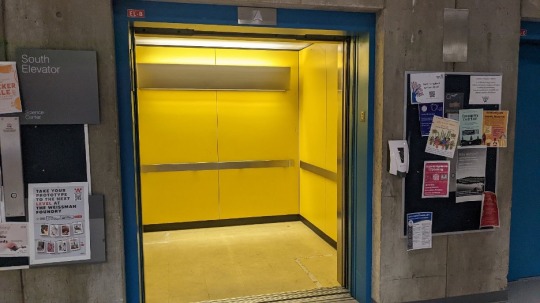
The good news is that, technically, the campus is becoming more physically accessible as buildings are updated. Through the capital projects update from Fall 2022 (accessible only through a Wellesley login), Severance Hall should become ADA-compliant after the summer, and (some of, based on the “LR only” note) Tower will be ADA-compliant in 2024. However, the update doesn’t indicate some dorms, such as Claflin, Munger, Beebe, and Shafer as becoming ADA-compliant. While, hopefully, these would mean these buildings are already compliant (although the Claflin laundry and the Quint’s tiny elevators make me doubt it), the lack of information is concerning.
In this update, they say “Extensive deferred maintenance on the Wellesley campus is a long-standing problem.” This results in massive, expensive repairs needing to be done that take buildings out of commission for extended periods of time, which could have been avoided with general maintenance when needed. When I discussed this with some faculty, though, I was told that maintenance gets deferred, in part, because of the intensive changes that would need to be made for ADA-compliance, such as Clapp’s shelves needing to be replaced so that they are at least 36 inches apart (2010 ADA 403.5.1), even though 42 inches would be better. Founders is (allegedly) also an example of this deferred maintenance, where braille can be found worn down to the point of illegibility.
Of course, ADA-compliance doesn’t technically work this way, and buildings are intended to be compliance even if no other alterations or additions are made, but there is a lot of language around allowances being made if the accessibility-oriented alterations aren’t readily achievable, which is a rather subjective definition. At least, that’s what I and some other students I know thought. Upon further research, however, the real loophole comes with the safe harbor of the 2010 ADA Standards, which lets buildings that meet the 1991 ADA Standards avoid updating their compliance … provided the safe-harbor-applicable elements haven’t been updated. With this, the College can continue being ADA-compliant without much work, as long they don’t modify the parts of the building that aren’t compliant with the 2010 standards. I haven’t the legal knowledge nor the mental capacity to read through the entirety of both the 1991 and 2010 standards for Title III to fully note which precise complaints I’ve heard would fall under this safe harbor (which is on an element-by-element basis, adding to the complications for a layperson), but this aligns what I’ve heard from faculty. A common cycle I’ve heard about is Accessibility and Disability Resources (ADR) receiving accessibility concerns and being told it’s a maintenance problem, only for maintenance to be told or tell students that it’s an ADR problem, continually giving one of the smallest offices (alongside the LGBTQ+ and sustainability offices, interestingly enough) the short end of the stick.
Even when already in place, accessibility features mean nothing when they are not consistently functional. For example, the lift in Tower West that provides access to the dining hall from the entrance near the Grey Lady was unusable for several days, first with the door broken then entirely removed.

Tower, in general, is centered around the Great Hall, which, while pretty, is blatantly inaccessible. I have spoken to RAs and students who have mentioned that student organizations would refuse to have events there due to the inaccessible entrance, directly impacting Res Life’s ability to foster community in Tower. Part of the problem with the Great Hall is the runner, which extends to the stairs on both entrances, which I was told administration didn’t want to obstruct because it was a gift to the College.
Even new(er) buildings such as the Science Center are inaccessible, from the accessible entrance on the far side near the dumpsters that requires a walk uphill either on the street or on a poorly paved path to the several occasions I was stuck on a floor of the building, forced to miss class because the elevators were broken. I remember mentioning this to a professor, who told me that it felt like a way of continually beating down students. Even when functional, Sci has an elevator problem — I remember having to wait up to 15 minutes alongside groups of up to 30 other people for an elevator on multiple occasions.
And all of this — over 700 words — is just regarding physical accessibility without any additional context. Swaths of community life has been made inaccessible for scores of students with the decreased COVID-19 guidelines, which were often framed as being due to a lack of positive cases. This framing, however, ignored the fact that they shut down one of the testing centers, leaving College Club (which is so far from the rest of campus that I had to stop going despite wanting to be tested) open three days a week, primarily during class periods; it was no wonder that testing went down, and positive cases lowered as a result despite the many students I saw who were sick and instead had to resort to the free (but expired) rapid tests the bookstore gave out or having other students source rapids, if they were the kind to care about COVID-19. These changes being reversed caught non-coronavirus concerns in the crossfire as well, such as the active prohibiting/discouragement of Zoom classes, which was highly beneficial for students that couldn’t always physically attend class.
ADR was told they were unable to give students COVID-19 accommodations, and that they could not require masks at their events because they are part of administration. This, while a notable point, is only one of many issues with the office. ADR is chronically underfunded, currently running on a single director and an administrative assistant who works for both ADR and PLTC. These two faculty members are supplemented by an array of Student Access Advocates (SAAs), who have become semi-inactive with the resignation of the former assistant director, who left after about a year. The SAAs do what they can, but a lack of funding and structural power prevents action. There’s often a feeling of both resignation and anger when it comes to ADR, a feeling that it should not be the way it is and must improve, but also that the office will never change. However, ADR can change with better transparency, funding, and staffing, alongside the willingness to actually listen to and give more power to the SAAs and to work with other students such as SAW and Active Minds.
Wellesley College is structurally flawed when it comes to accessibility in almost every area. Students should not be forced on medical leave due to normal mental health issues. Several students I know have said that the Stone Center is largely ineffective at best and harmful at worst. At least one of my classes required I enroll in Willow, a depression prevention project by the Wellesley Centers for Women, which to me was bleak. I have several disabilities, both physically and neurologically/mentally, and was told by my major advisor that Wellesley is not necessarily able to accommodate my needs as it stands currently. I know of several students who had to transfer or drop out because of their disabilities.
All of this, paired with the constantly increasing cost of attending, makes it hard to justify Wellesley. The community is often amazing, although I and many others have experienced ableism from our peers, but the administration is hard to push through. When you are not just disabled but queer and/or trans, or a person of color, or FGLI, or any combination of the above, it is increasingly more difficult to feel that you have a place at Wellesley or that you are even welcome. This is why disabled voices need to be centered and amplified, and alums need to make their voices heard. Many of us (current students) know that alums often do not get to see the state of the College, especially when the College is technically ADA compliant, but we are here, ready to talk about it to anyone who will listen to provide better circumstances to current and future students.
10 notes
·
View notes
Text
Events 7.28
1364 – Troops of the Republic of Pisa and the Republic of Florence clash in the Battle of Cascina.
1540 – Thomas Cromwell is executed at the order of Henry VIII of England on charges of treason. Henry marries his fifth wife, Catherine Howard, on the same day.
1571 – La Laguna encomienda, known today as the Laguna province in the Philippines, is founded by the Spaniards as one of the oldest encomiendas (provinces) in the country.
1635 – In the Eighty Years' War, the Spanish capture the strategic Dutch fortress of Schenkenschans.
1656 – Second Northern War: Battle of Warsaw begins.
1778 – Constitution of the province of Cantabria ratified at the Assembly Hall in Bárcena la Puente, Reocín, Spain.
1794 – French Revolution: Maximilien Robespierre and Louis Antoine de Saint-Just are executed by guillotine in Paris, France.
1808 – Mahmud II became Sultan of the Ottoman Empire and Caliph of Islam.
1809 – Peninsular War: Battle of Talavera: Sir Arthur Wellesley's British, Portuguese and Spanish army defeats a French force led by Joseph Bonaparte.
1821 – José de San Martín declares the independence of Peru from Spain.
1854 – USS Constellation (1854), the last all-sail warship built by the United States Navy and now a museum ship in Baltimore Harbor, is commissioned.
1864 – American Civil War: Battle of Ezra Church: Confederate troops make a third unsuccessful attempt to drive Union forces from Atlanta, Georgia.
1866 – At the age of 18, Vinnie Ream becomes the first and youngest female artist to receive a commission from the United States government for a statue (of Abraham Lincoln).
1868 – The 14th Amendment to the United States Constitution is certified, establishing African American citizenship and guaranteeing due process of law.
1896 – The city of Miami, Florida is incorporated.
1914 – In the culmination of the July Crisis, Austria-Hungary declares war on Serbia, igniting World War I.
1915 – The United States begins a 19-year occupation of Haiti.
1917 – The Silent Parade takes place in New York City, in protest against murders, lynchings, and other violence directed towards African Americans.
1932 – U.S. President Herbert Hoover orders the United States Army to forcibly evict the "Bonus Army" of World War I veterans gathered in Washington, D.C.
1935 – First flight of the Boeing B-17 Flying Fortress.
1938 – Hawaii Clipper disappears between Guam and Manila as the first loss of an airliner in trans-Pacific China Clipper service.
1939 – The Sutton Hoo helmet is discovered.
1942 – World War II: Soviet leader Joseph Stalin issues Order No. 227. In response to alarming German advances, all those who retreat or otherwise leave their positions without orders to do so are to be tried in a military court, with punishment ranging from duty in a shtrafbat battalion, imprisonment in a Gulag, or execution.
1943 – World War II: Operation Gomorrah: The Royal Air Force bombs Hamburg, Germany causing a firestorm that kills 42,000 German civilians.
1945 – A U.S. Army B-25 bomber crashes into the 79th floor of the Empire State Building killing 14 and injuring 26.
1957 – Heavy rain and a mudslide in Isahaya, western Kyushu, Japan, kills 992.
1960 – The German Volkswagen Act came into force.
1965 – Vietnam War: U.S. President Lyndon B. Johnson announces his order to increase the number of United States troops in South Vietnam from 75,000 to 125,000.
1973 – Summer Jam at Watkins Glen: Nearly 600,000 people attend a rock festival at the Watkins Glen International Raceway.
1974 – Spetsgruppa A, Russia's elite special force, was formed.
1976 – The Tangshan earthquake measuring between 7.8 and 8.2 moment magnitude flattens Tangshan in the People's Republic of China, killing 242,769 and injuring 164,851.
1984 – Olympic Games: Games of the XXIII Olympiad: The summer Olympics were opened in Los Angeles.
1996 – The remains of a prehistoric man are discovered near Kennewick, Washington. Such remains will be known as the Kennewick Man.
2001 – Australian Ian Thorpe becomes the first swimmer to win six gold medals at a single World Championship meeting.
2002 – Nine coal miners trapped in the flooded Quecreek Mine in Somerset County, Pennsylvania, are rescued after 77 hours underground.
2002 – Pulkovo Aviation Enterprise Flight 9560 crashes after takeoff from Sheremetyevo International Airport in Moscow, Russia, killing 14 of the 16 people on board.
2005 – The Provisional Irish Republican Army calls an end to its thirty-year-long armed campaign against British rule in Northern Ireland.
2010 – Airblue Flight 202 crashes into the Margalla Hills north of Islamabad, Pakistan, killing all 152 people aboard. It is the deadliest aviation accident in Pakistan history and the first involving an Airbus A321.
2011 – While flying from Seoul, South Korea to Shanghai, China, Asiana Airlines Flight 991 develops an in-flight fire in the cargo hold. The Boeing 747-400F freighter attempts to divert to Jeju International Airport, but crashes into the sea South-West of Jeju island, killing both crew members on board.
2017 – Prime Minister of Pakistan, Nawaz Sharif was disqualified from office for life by Supreme Court of Pakistan after finding him guilty of corruption charges.
2018 – Australian Wendy Tuck becomes the first woman skipper to win the Clipper Round the World Yacht Race.
0 notes
Text
MEMBER GROUPS
OLD TORONTO #D6A7A4
The majority of the people who live in Old Toronto are leaders, guardians, hospital staff, scientists, and ZDU staff. They live in a variety of different housing options, from rebuilt condos and renovated hotels to brand new homes that have been built over top of torn down buildings. There are even a few people who live underground in the path! A major form of transportation is the subway however many people bike, skateboard, roller-skate, and walk to work. A few higher up officials will be transported using the government solar powered cars, although these are quite limited at the moment.
KENSINGTON #F4D58D
Home to many families, Kensington houses people from all over Viridia. You can usually find education workers, hospital and clinic staff, entertainment workers, and scouts. They live mainly in rebuilt and renovated houses, although there are a few low apartment buildings that have been upgraded for smaller families. The main form of transportation is usually walking however a few people bike, skateboard, and roller-skate to work.
WELLESLEY #778694
Wellelsey's main attraction is the Factory Belt, resulting in mainly only factory workers living in this quadrant. However, you do sometimes find engineers, scientists, farmers, and clinic staff as well. Most people in Wellesley ride miniature motorized vehicles for fast travel, like scooters and bicycles and skateboards, which they've usually crafted themselves. Some higher level factory workers and engineers have solar powered vehicles, but they are few and far between.
CABBAGETOWN #849C7E
As you'd expect, Cabbagetown is mainly populated by farmers. There are a few engineers, scientists, and clinic workers as well! The main form of transportation is walking, however some Cabbagetown citizens have created their own forms of transportation. You'll see all sorts of personalized motorized vehicles, usually running on solar energy or gas: skateboards, scooters, miniature cars, unicycles, seated bicycles, and ATVs.
TRAVELERS #897F71
Travelers include any and all citizens of Viridia that don't have one place they reside in. There is a hotel in each neighbourhood that is used for Travelers who don't often stay in Viridia for long or who are just visiting from other cities. Mainly, the only profession you find in the Travelers member group are scouts, however sometimes there are scientists and engineers that do a lot of travelling work outside of Viridia.
0 notes
Photo


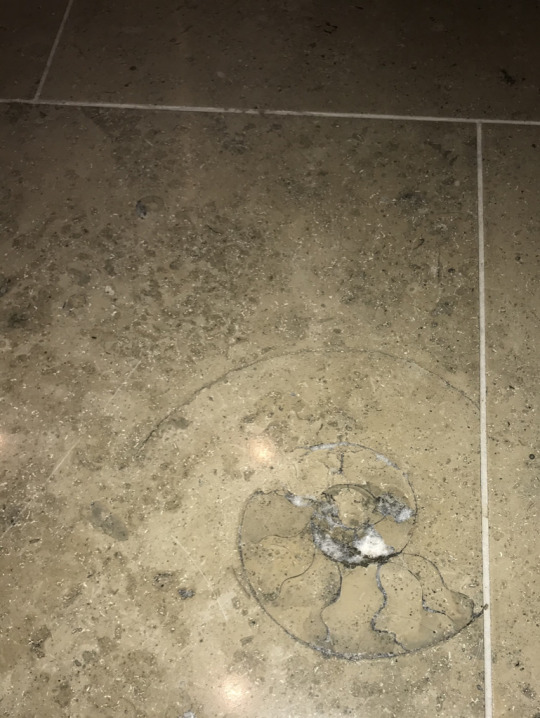
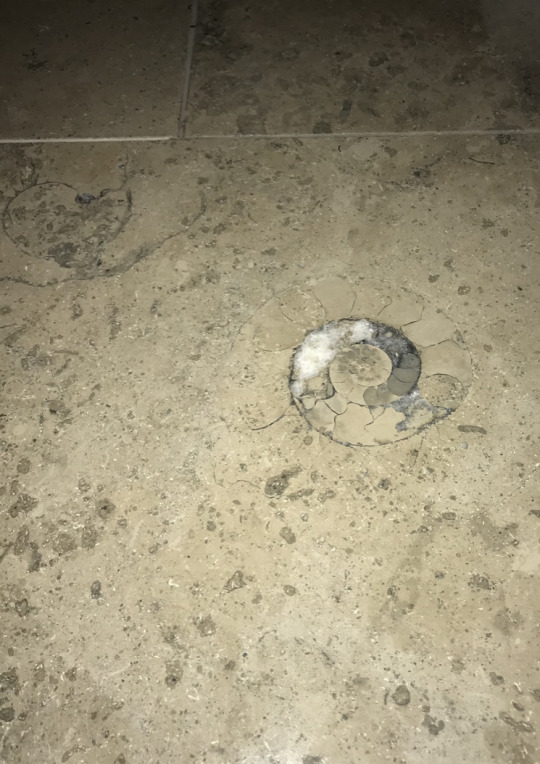
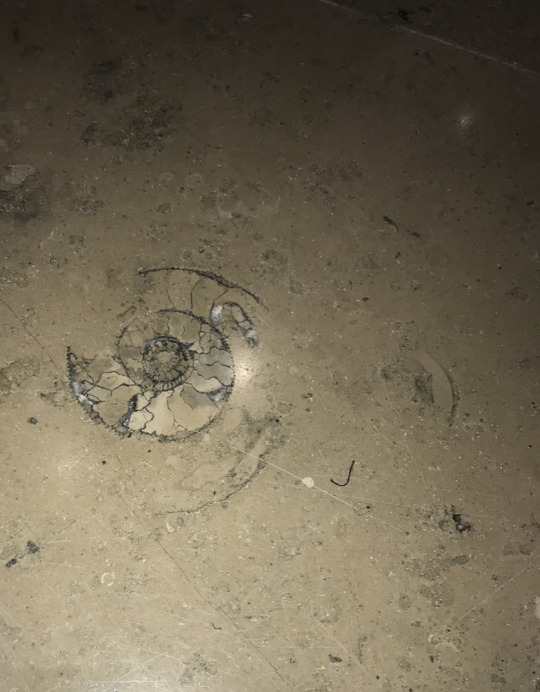

Research:
Auckland water passages underground potentially flowing under the Auckland art gallery back in 1840.
crystals and fossils have always interested me. as i found the fossils and dug into the history of the building (Auckland art gallery) i noticed the fossils on the floor and realised there had to be a reason why they designed the tiles there. the gallery has been in the same place for a long time and that made me think the designers must have had a reason to do this design on the flooring. as it turned out under the gallery there used to be streams running under it. the fossils on the floor are ancient water creatures, this ties in the idea of using them in the first place.
Waihorotiu Stream or well known as the 'Queen Street River', is a stream that ran down Queen Street millions of years ago. While researching about this historic stream I have situated a conclusion that supposedly, this stream ran under the Auckland art gallery, as it is situated on the corner of Wellesley Street and is very close to queen street. In my understanding it's possible that the stream ran under the gallery. My hypothesis for this is because while wandering around the gallery I came across flooring with fossils intergraded in the polished tiles. I love the use of this tile as it relates to the history of the gallery supposedly using this choice of tile to project part of the rich historical research about the space. Whether or not this is the reason of the chosen flooring I like to think there is a good reason behind it. This idea has become the backbone of my design influence as it is, overlooked in most people. The idea of bringing back the history in an extravagant idea by taking it from a subtle approach of the flooring and turning it into my design where fossils and crystals are the center of my design.
https://en.wikipedia.org/wiki/Waihorotiu_Stream#:~:text=Waihorotiu%20(from%20the%20M%C4%81ori%20Wai,the%20urbanisation%20of%20the%20area.
0 notes
Text
Wellesley Writes It: Dr. Kwan Kew Lai
Wellesley Writes It: Dr. Kwan Kew Lai
In my second interview since I started back editing for Wellesley Underground as their Wellesley Writes It editor, I corresponded with Dr. Kwan Kew Lai, Wellesley ’74 and author of Lest We Forget: One Doctor’s Experience with Life and Death During the Ebola Outbreak.
Here’s the beginning of the interview:

Kwan Kew Lai ’74, M.D., D.M.D., is an infectious disease specialist who has volunteered her…
View On WordPress
#Belmont#doctor#doctors#Dr. Kwan Kew Lai#E.B. Bartels#EB Bartels#Ebola#Ebola outbreak#infectious disease#infectious diseases#interview#Kwan Kew Lai#Lest We Forget#Wellesley#Wellesley &039;10#Wellesley &039;74#Wellesley College#Wellesley College Alumnae Achievement Award#Wellesley Underground#Wellesley Writes It#woman#woman of color#woman writer#women#women of color#women writers#WU
0 notes